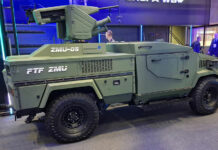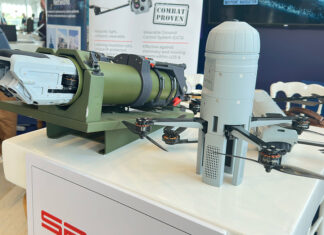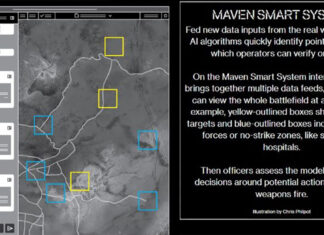Fielding of advanced C4ISR technology with the lower echelons will introduce new opportunities but also pose new challenges to trainers and recruiters, as it will require recruitment of more technologically savvy personnel. Carefully balanced training and procedures should be implemented, to maintain combat warfighting skills, with physical and psychological endurance, while mastering technological prowess. These new capabilities should address Tactical, Technical Procedures (TTP) training and human factors, as well as careful design of the man-machine interfaces, to best integrate the systems’ operation into the soldier’s environment, rather than change the soldier’s activities to match the new system’s needs.
For example, typical system interfaces should address display type, size, daylight-and night visibility (brightness, color), the use of text messages, automatic text-to-speech conversion, voice activation commands and audible alerts enabling effective human multi-tasking without impairing the primary functions (mobility, hand-eye coordination, hearing etc.) A critical issue is the interaction with command-and-control systems, particularly under the stressful conditions. Designers tend to use industry standard ‘windows’-based displays to benefit from the familiarity most people have with ‘Windows’ based applications. However, the commercial success and enthusiast adoption of Apple Computers’ iPhone clearly demonstrated the importance in matching the ergonomics of a complex electronic device to the user’s operating environment. The development of the ‘Common Controller’, to be used as standard controller of all future robotic systems, is an example of such an approach. GSE as well as the the new ISR system, which will become the core of the BCT-Modernization, should be addressed along similar guidelines.
Good examples for such tactical C4 systems can be realized in some of the European and Israeli systems. An example is the latest version of the French Army battle management system, designed for the French Army soldier modernization system (FELIN) and the Israeli Elbit System Dominator, which established a subset of the ‘Digital Army’ Program (DAP). Both systems were designed for small format displays and offer the user quick and intuitive ‘shortcuts’ for combat relevant functions, relieving the soldier from ‘drilling’ into endless menus and submenus of commands, to get to the relevant function in his immediate sphere of interest. Such displays should also effectively respond to operators, using fire retardant or chemical, biological, radiological, and nuclear (CBRN) protective gloves. For displays to be integrated into the soldier’s combat gear, dismounted operations will require, either integrated display controllers, or helmet-mounted displays, while for combat vehicles, displays should be integrated into weapons and sensor sights and other vision systems, enabling the crew and vehicle commanders to monitor the tactical situational picture in their area of responsibility, while performing their basic warfighting functions as fighting vehicles crewmen.
The development of other MDAP continues for medium and long term modernization of the BCT. These include the Class IV (Firescout) unmanned helicopter developed by Northrop Grumman, the robotic MULE load carrier and common controller, developed by Lockheed martin, and the QuickKill Active Protection System, which, like other survivability and protection components – was excluded from the MGV termination. The APS program continues with both long and short range munitions, as well as its associated sensors. Development of other sensors considered integral parts of the MGV was stopped as part of the FCS termination, except for those shared by the MULE and Class IV programs.



















